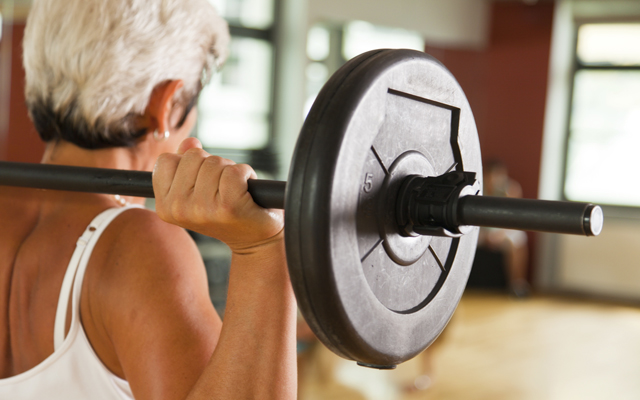
Resistance training and higher protein intake are crucial for adults to age better by maintaining muscle.
You know, everyone knows, that strength training is essential for staying in shape and holding onto muscle as you get older. And that takes getting into the gym and lifting heavy things.
But knowledge doesn’t always translate to practice.
Less than a quarter of adults over 45 in the U.S. actually follow recommendations to get sufficient resistance exercise, according to a new study from the U.S. Centers for Disease Control and Prevention (CDC).
The CDC study involved analyzing data from telephone surveys where people were asked about the kinds of physical activities they engaged in and how often, as well as whether or not they exercised specifically to strengthen muscles.
Only about 24 percent of survey participants over 45 said they got enough strength training.
The least likely to meet guidelines were women, widows, those age 85 and older, people who were obese, Hispanics, and people who didn’t graduate from high school.
More cards are stacked against older adults for holding on to their muscle. They could also exhibit signs of “anabolic resistance,” according to kinesiologist Daniel Moore of University of Toronto writing in Advances in Nutrition.
Anabolic resistance is a failure of the body to build muscle in response to eating protein and exercising. It doesn’t just affect older people, Moore says, but it’s a “hallmark of sedentary lifestyle at any age.”
This blunted anabolic resistance will cause loss of muscle with age unless it’s fought against by remaining active, Moore says.
Given that this loss of muscle usually precedes other chronic health problems of older age, Moore says paying attention to anabolic resistance is critical.
He also outlines three ways of using dietary protein to maximally stimulate muscle on a daily basis.
More protein
First, skeletal muscle proteins are constantly being remodeled, Moore says. So the first step necessary to keep muscle is to get more protein than the current Recommended Dietary Allowance (RDA) of 0.8 grams per kilograms of body weight.
The RDA amount can be considered “adequate” to avoid a deficiency, but it’s also “suboptimal.” Recent consensus from experts suggests protein intake should be in the range of 1-2 grams per kilogram.
A higher intake of dietary protein is associated not only with better muscle maintenance, but also better bone health and immune function in older adults.
Better quality protein
Second, make sure dietary protein contains enough of the right essential amino acids for muscle synthesis. This includes the branched-chain amino acids such as leucine that are critical to trigger muscle synthesis.
Because whey protein is a rich source of leucine and is rapidly digested it’s shown to stimulate “a greater increase” in muscle protein synthesis in older adults compared to other types of protein, Moore says.
Spread it out
Third, spread dietary protein over the course of the day. Better muscle modeling happens when you stimulate muscle synthesis three times a day versus just one. So Moore explains it makes more sense to get a sufficient amount of protein at breakfast, lunch, and dinner.
Studies show that about 30 to 40 grams of protein, especially from whey, three times daily is enough to trigger muscle synthesis. Less is not enough in older adults with anabolic resistance.
Aging Actively
Most important, however, is getting enough physical activity. Inactivity is the prime causal factor of anabolic resistance, Moore says.
And it’s absolutely required to keep muscle sensitive to protein intake and, thus, use that protein for muscle synthesis.
Otherwise, all that extra protein just won’t cut it.
In fact, Moore would like to change the way “anabolic resistance of aging” is thought of by describing it as “anabolic resistance of inactivity.”
And although any physical activity is helpful, Moore says, he reiterates what we all know to be true—and it’s time to repeat it again for the 76 percent of us who don’t get enough—resist anabolic resistance with resistance training.
References
Dallas ME. Adults over 45 not meeting U.S. muscle strengthening guidelines, study says. HealthDay. Available at: http://www.nlm.nih.gov/medlineplus/news/fullstory_148478.html
Moore D. Keeping older muscle “young” through dietary protein and physical activity. Adv. Nutr. 5: 599S–607S, 2014; doi:10.3945/an.113.005405.





